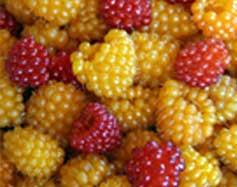Tribal Profiles - Alaska Region
- Tribal Profiles
- Alaska
- Algaaciq Native Village
- ANTHC Assessing Health Impacts and Documenting Observed Changes
- ANTHC Portable Alternative Sanitation System
- Central Council of the Tlingit & Haida Indian Tribes of Alaska
- Norton Bay Inter-Tribal Watershed Council
- Reindeer Herders Association
- Yupik Changes & Observations
- Tribal Profiles
- Alaska
- Algaaciq Native Village
- ANTHC Assessing Health Impacts and Documenting Observed Changes
- ANTHC Portable Alternative Sanitation System
- Central Council of the Tlingit & Haida Indian Tribes of Alaska
- Norton Bay Inter-Tribal Watershed Council
- Reindeer Herders Association
- Yupik Changes & Observations

Yupik Changes & Observations
Snow: Residents of Quinhagak have observed much lower levels of snowpack in the past five years. Snowdrifts used to be as high as houses, but now winter snows may barely cover the tussocks and the tundra. With little or no snow, potholes can form which may impact travel and hunting as well as land mammal behaviors.
Residents of Quinhagak have observed much lower levels of snowpack in the past five years. Snowdrifts used to be as high as houses, but now winter snows may barely cover the tussocks and the tundra. With little or no snow, potholes can form which may impact travel and hunting as well as land mammal behaviors.
Snowfall affects winter bear, ungulate, and human behaviors. Brown bears are beginning to build their dens on the tundra flats instead of on the south facing mountains, and are coming out of winter hibernation earlier, in December and January when unusual winter rains are occurring. This is having an effect on predation in the area that has not yet been fully realized. Although the reduced amount of snow negatively affects some animal species, it may actually help ungulates. Less snow makes more food (lichen and willow shoots) available to caribou and moose. This may benefit humans who depend on these animals as a food source.
The reduced amount of snow is also impacting berry production as residents are noticing a decline in the amount of harvestable berries, and this affects those dependent on berries as a food source, including land animals and humans. Salmonberries, an important food for some Alaska Natives, seem to be declining due to inadequate amounts of moisture provided by the diminished snow fall.
Adaptation:
The high price of fuel in rural Alaska is requiring residents to modify their behaviors and decrease their fossil fuel use. This is better not only for their personal finances, but also for the environment.
Coping strategies include
- Small hunting groups joining together to help share the cost of fuel and to increase human power for a successful hunt.
- Increasing the amount of time a family or group stays out hunting. Rather than day trips, week trips are becoming more practical.
- Decreasing speed when traveling in motorized boats in order to save gas.
- Delaying the establishment of trap-lines until water areas are frozen.
- Utilizing wood stoves and moving away from oil stoves.
- Relocating fish camps closer to villages.
- Building bridges over sloughs for winter snowmobile travel.
- “Just make do.”
Fish:
In recent years one species that has been thriving in the Kuskokwim delta area has been the sockeye salmon. This has had a positive impact on commercial fishing, providing economic benefits to the people of the lower Kuskokwim and helping them to offset the cost of gas and higher prices of store-bought foods.

Water Level:
Lower water levels may also affect
- Spring migration of waterfowl
- The Kuskokwim delta is an important resting place for waterfowl. The lack of water may affect migration in a profound way. Residents have noticed the number of white-fronted geese is increasing compared to Canada geese.
- Eelgrass habitat
- Lower levels of water may affect the condition and production of eelgrass, a source of food for migrating geese.
CONNECT WITH US
Nikki Cooley
Co-Director
Nikki.Cooley@nau.edu
Karen Cozzetto
Manager
Karen.Cozzetto@nau.edu
Your tax deductible donation supports ITEP’s programming efforts.
Please contact us if you would like to contribute to our endowment or for any additional information regarding donations.

